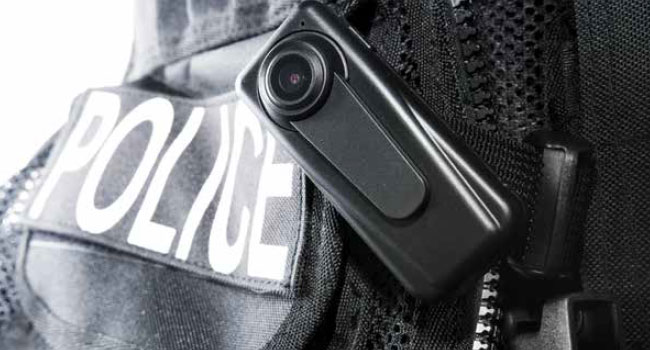
What's In Store
Video surveillance plays a pivotal role in terrorism
- By Wayne Arvidson
- Dec 01, 2016
What’s ahead in 2017? In 2016,
we saw video surveillance and
security increasingly become
the focus of mainstream media
conversations, with video playing
a pivotal role in bringing terror suspects to justice
(as it did recently in NYC) and with police body-worn
cameras capturing sometimes controversial incidents
that spark national conversations. Behind the camera,
technology has continued to evolve and storage has
become an even more important consideration for
anyone implementing a surveillance and security system.
Integrators, resellers, vendors and end-users can
look to 2017 as a time of vigorous change for video
surveillance and security.
INCREASED INTELLIGENCE IN CAMERAS
In 2016, we also saw a surge in camera counts—particularly
HD cameras—leading to an exponential leap
in data to manage. Not Homeland Security but also
universities, municipalities, schools, and commercial
enterprises are increasingly adopting cameras with
more sensors, wider panoramas, and higher resolutions.
We see these organizations increasingly expect
more sophisticated surveillance capabilities—compression,
streaming, storage and analytics—built into
the cameras themselves for better value. As camera
prices continue trending downward, even more organizations
will switch from analog and SD cameras.
The increased amount of data obviously puts a
strain on storage and increases the importance of
an intelligent, multi-tier storage strategy, but the improved
intelligence in cameras also increases the importance
of storage management software to effectively
manage the influx of data.
GREATER ADOPTION OF ANALYTICS
With more analytical capabilities moving into the
cameras, video analytics applications are becoming
more feature-rich and sophisticated, and non-traditional
organizations are realizing that video can be
used to make better business decisions. Logistics companies,
for example, use video to track cargo through
ports and rail yards to improve efficiency.
Retail companies use video to observe shopper
behavior to make better decisions regarding product
placement, store layout, and advertising. By using
video-based data to improve business, some companies are reaping real business value,
shifting the expense of their surveillance
solution from a cost center to an
investment. Surveillance is doing more
than just keeping people and property
safe; it’s leading to financial returns.
To realize this kind of value, data must
be kept for a long time. That requires
a storage infrastructure that provides
cost-effective, long-term data retention
as well as performance.
IMORE GRANTS FOR BODY WORN
CAMERAS—BUT NOT STORAGE
Driven by federal funding made available
to help departments, we’ve seen
an acceleration of body-worn camera
adoption and increased retention times
for footage as departments realize their
value for evidence and public safety.
The Department of Justice has released
additional funding for 2017, but it still
is focused strictly on cameras—not the
storage behind them.
This leaves many law enforcement departments
and agencies in a quandary,
struggling with managing these massive
new data sets, establishing retention policies,
and creating the storage infrastructure
required to support body-worn camera
deployments, which is increasingly
being viewed as a funding requirement.
With communities demanding bodyworn
cameras for their law enforcement
agencies for greater accountability, addressing
the storage challenge they create
will remain a priority.
AGGREGATION OF CONTENT
Law enforcement agencies increasingly
need to cope with collecting information
from many different systems—dash
cams, body cams, interview room, sally
port devices—and aggregate the content.
Agencies are looking to simplify
how they gather the data and store it
while protecting chain-of-evidence requirements.
That concept is expanding
to encompass both public and private
agencies to drive cohesive and coordinated
action from a variety of partners
to include content from systems such as
secure parking areas and city properties.
The city of Santa Ana is doing just
that, and it creates a huge challenge
not just for how to store the data economically,
but for managing data from
a wide range of incompatible systems.
Look for developments in storage management
systems designed to collect
and store this content efficiently, easily,
and cost-effectively without creating silos
of storage.
BIOMETRICS
With cyber security a rising priority for
public and private entities, biometrics
are being explored as a measure to prevent
massive data breaches. In conjunction
with The White House, the Cyber
Security Alliance launched an initiative
advising the use of fingerprints and one
time codes as a way of authentication.
Facial recognition is another growth
area, where biometric technology is
now available for use with body-worn
cameras. Both technologies hold great
potential, and will require intelligent
storage in order to keep the costs of the
related data under control.
This article originally appeared in the December 2016 issue of Security Today.